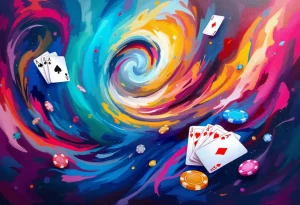Hello there, art enthusiasts! Eleanor Vance here, fresh from the hallowed halls of museum archives and lecture circuits, ready to dive into something near and dear to my heart: the seismic impact of graphic novels on the broader art world. Forget dusty tomes and stuffy gallery openings for a minute, we’re talking about sequential art that punches you in the gut and tickles your brain all at once. Believe me, I’ve seen enough art history to know a game-changer when I see one, and graphic novels? They redrew the whole damn map.
Beyond Capes and Cowls: A New Visual Language
Let’s be honest, for years, comics were relegated to the spinner racks of drugstores, viewed as kid stuff, pulp entertainment. But something shifted. Creators started pushing boundaries, exploring mature themes, experimenting with narrative structures, and, crucially, elevating the art. Think about it, before graphic novels really took off, the art world was pretty segregated. Illustration was “lesser” than painting, comics were “lesser” than illustration. But graphic novels? They smashed those walls to smithereens.
We’re not just talking about superheroes anymore. The rise of the graphic novel saw complex narratives tackling everything from historical trauma to personal identity, all rendered with an artistic vision that demanded attention. And this, my friends, is where the real influence began to seep into the mainstream.
From Panel to Palette: Echoes in Contemporary Art
Now, I’m not saying every artist suddenly started drawing in panels (though some did!), but the attitude, the approach, that’s what changed. Graphic novels legitimized visual storytelling in a new way. They proved that art could be both intellectually stimulating and emotionally resonant, accessible without being dumbed down.
Take, for example, the resurgence of narrative painting. Artists started incorporating sequential elements into their work, hinting at stories unfolding across canvases. Think about Walton Ford’s incredible animal paintings – each one feels like a single panel ripped from some epic, untold tale. Or consider the work of someone like Kara Walker; her silhouettes grapple with incredibly complex historical narratives in ways that owe a debt, whether acknowledged or not, to the power of visual storytelling honed in graphic novels.
Breaking Down Barriers: Accessibility and Engagement
One of the most significant impacts of graphic novels is their accessibility. Let’s face it, the art world can be intimidating. A lot of people feel like they need a PhD in art history (like yours truly) to “get it.” But graphic novels? They invite you in. The combination of words and pictures creates a bridge, making complex ideas easier to grasp and emotions more immediate.
And this accessibility, in turn, has fostered a new level of engagement. Graphic novels have become powerful tools for education, activism, and social commentary. Marjane Satrapi’s “Persepolis,” for instance, offers a deeply personal and insightful look at the Iranian Revolution, making a complex historical event relatable on a human level. That’s something a textbook just can’t do.
The Future is Sequential: A Continuing Dialogue
So, where does this leave us? Well, the dialogue between graphic novels and visual art is far from over. In fact, it’s just getting started. We’re seeing more and more artists blurring the lines between these worlds, experimenting with new forms of visual storytelling and pushing the boundaries of what art can be.
And that, my friends, is something to celebrate. The influence of graphic novels has enriched the art world in countless ways, making it more dynamic, more accessible, and more relevant than ever before. So, the next time you see a piece of art that tells a story, remember the debt it owes to those humble comics that dared to dream bigger. Now, if you’ll excuse me, I’m off to find the next visual masterpiece. Ta!








